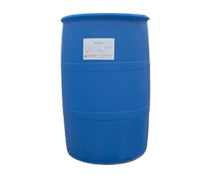Scholars at home and abroad have carried out a lot of meaningful research and exploration on the remediation of PAH-contaminated soil by surfactants. However, the existing research mainly focuses on traditional surfactants, and traditional surfactants often have problems such as toxicity, secondary pollution, and high price. Therefore, finding economical, effective and environmentally friendly new surfactants will become the future application of surfactant repair. Research hotspots and key points of PAH-contaminated soils.

Novel gemini surfactants and biosurfactants have attracted widespread attention due to their high efficiency and environmental friendliness. The solubilization efficiency of gemini surfactants and biosurfactants is higher than that of traditional surfactants.
The addition of ionic surfactants raises the cloud point of nonionic surfactants. When the concentration of external surfactant is constant, the lower the concentration of nonionic surfactant, the higher the charge density of the mixture formed by the two, the greater the repulsive force between micelles, and the higher the cloud point. At the same nonionic surfactant concentration, as the concentration of the added ionic surfactant increases, the cloud point generally increases. This is also due to the increased surface charge density of the micelles. Therefore, the size of the charge density of the mixed micelles formed by the nonionic surfactant and the ionic surfactant determines the cloud point. The higher the charge density, the higher the cloud point.
The influence of co-surfactants such as alcohols and organic acids on cloud point is also the result of the combined effect of two factors. The hydrophilic group of alcohol can form hydrogen bonds with water, which limits the micelleization of surfactants and increases the cloud point. The increase in the total water content of the bundle also increases the cloud point. Alcohol is solubilized in the barrier layer, and the hydrophilic group is close to the polar head of the surfactant. The effect of steric hindrance and the formation of hydrogen bonds with ether reduces the hydration ability of the surfactant and reduces the cloud point. Methanol and ethanol have short carbon chains and strong hydrophilicity. Most of them are soluble in water in micellar solution, and some of them are adsorbed on the micellar interface and barrier layer, thereby increasing the cloud point; for alcohols with carbon number greater than 4, hydrophilic Poor performance, most of them are solubilized in the barrier layer, which reduces the cloud point. For polyols, such as ethylene glycol, glycerol, glucose, etc., the more hydroxyl groups they have, the easier it is to form hydrogen bonds with the ether bond of the surfactant, which reduces the hydration and the cloud point.